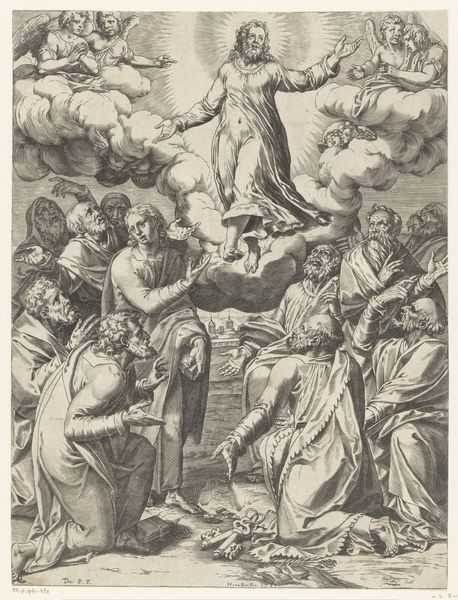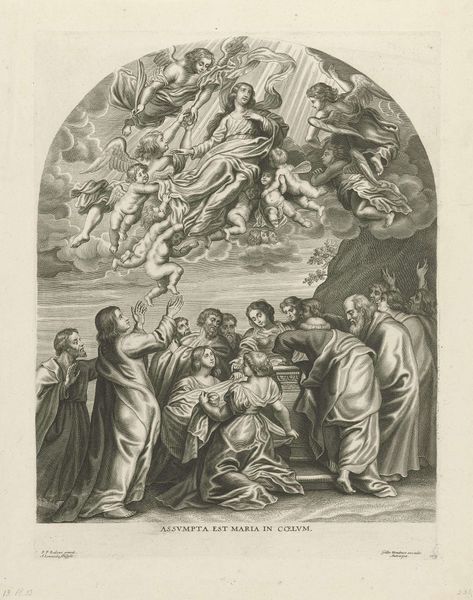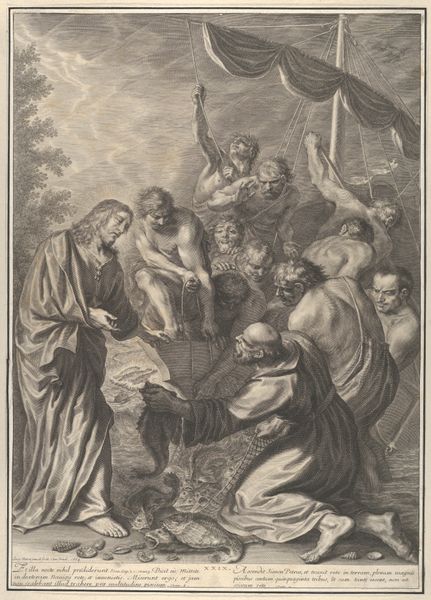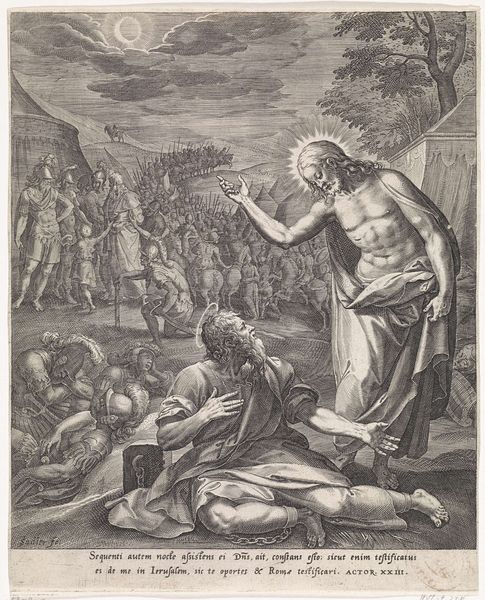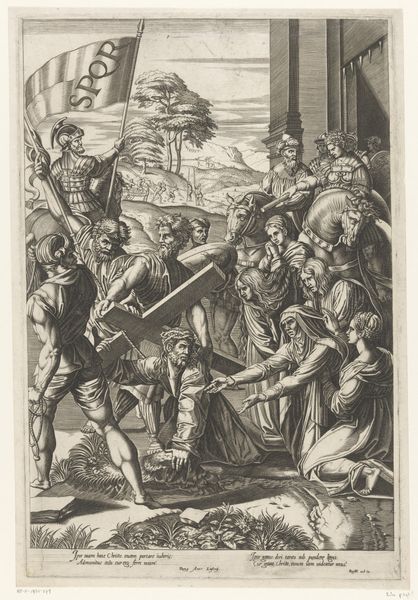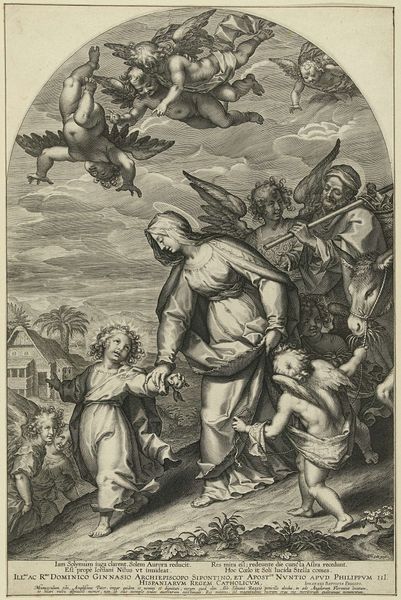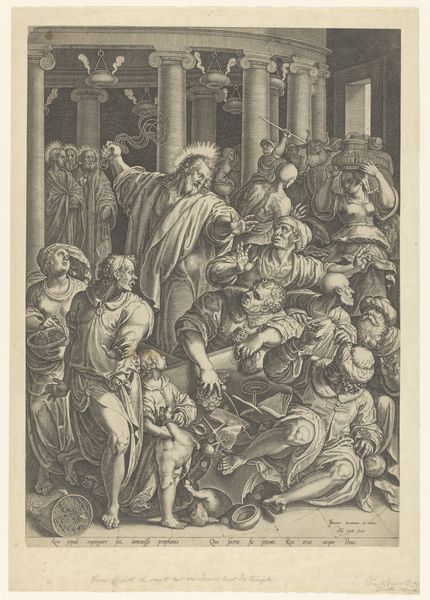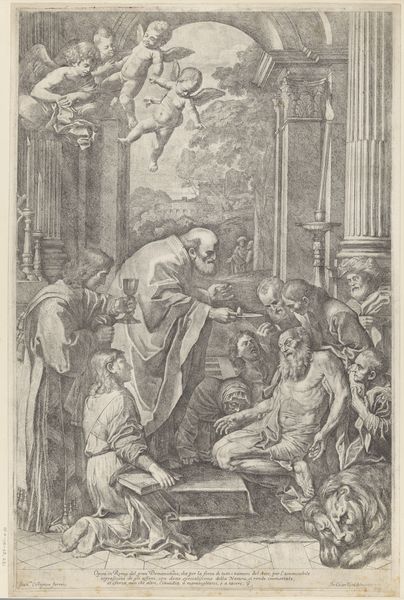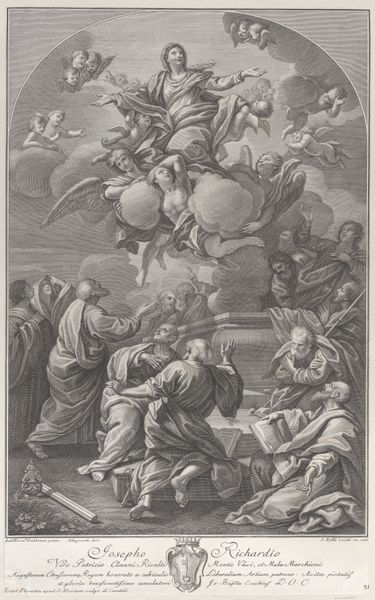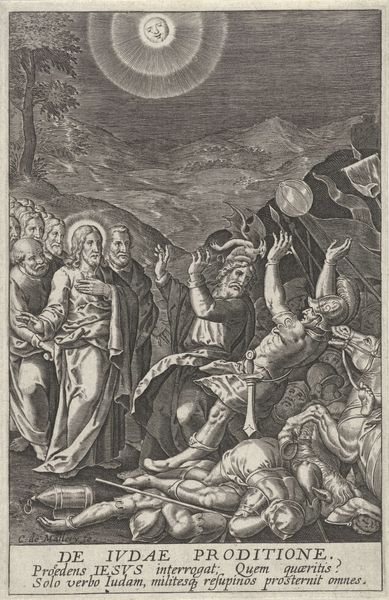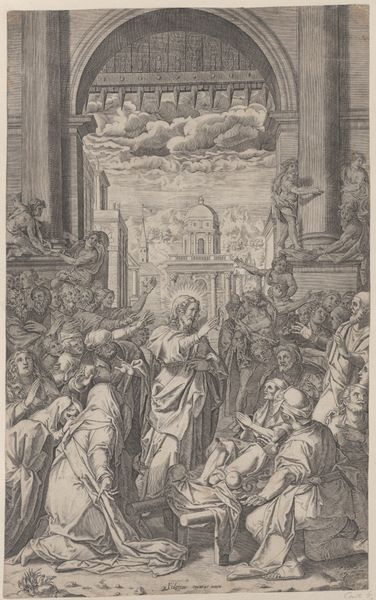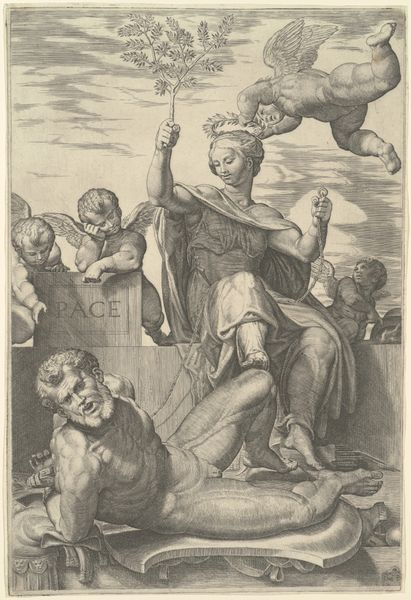
Moses at left with the Israelites who gather manna as it falls from the sky, two angels above, after Reni 1776
0:00
0:00
drawing, print, engraving
#
drawing
# print
#
figuration
#
men
#
history-painting
#
engraving
#
angel
Dimensions: Sheet (Trimmed): 19 13/16 × 12 11/16 in. (50.3 × 32.2 cm)
Copyright: Public Domain
Curator: Wow, this image just washes over you, doesn’t it? Like a hazy dream spun from silver thread. Editor: Indeed. What we’re looking at here is an engraving from 1776, titled "Moses at left with the Israelites who gather manna as it falls from the sky, two angels above, after Reni," created by Benedetto Eredi. It's currently held at the Metropolitan Museum of Art. A fascinating depiction of a biblical scene, viewed through the lens of the late 18th century. Curator: Through the lens, yes, but also filtered through emotion, I think. Look at Moses. There he stands, almost detached, yet his gesture, it's like he's inviting the heavens to open for us. Do you see the people? So much suffering, so much expectancy. Editor: Absolutely. The image captures the intersection of divine intervention and human need. Eredi's choice of engraving allows for incredibly detailed rendering of fabric, facial expressions, the very texture of the earth from which these people are trying to wrest a living. The falling manna, represented as tiny specks, speaks volumes about dependence on higher powers during times of adversity. And let's not forget the angelic presence, those playful cherubs overseeing the miracle, a touch of divine levity in an otherwise desperate situation. Curator: Levity is a good word! It stops it from being all grim biblical seriousness. And there’s almost a baroque drama to it all. The artist’s use of light feels deliberately uneven to create drama in how he shows people gathering. The composition feels like it pushes the eye forward toward the back of the image, with all the movement around Moses almost pushing out of the plane. Editor: Yes, that dramatic intensity you describe aligns with broader trends of the era, when biblical themes were reinterpreted to convey both moral lessons and powerful emotion. Prints such as these also democratized access to artistic interpretations of religious narratives. Suddenly, these epic scenes weren’t confined to palace walls, but could be contemplated in the homes of a burgeoning middle class. Curator: The past, flattened into lines and specks and shading. You really see that struggle, rendered in exquisite detail. Editor: Precisely. The piece serves as a compelling reminder of how artistic interpretations can shape—and reflect—the values of a society, across different historical periods.
Comments
No comments
Be the first to comment and join the conversation on the ultimate creative platform.
